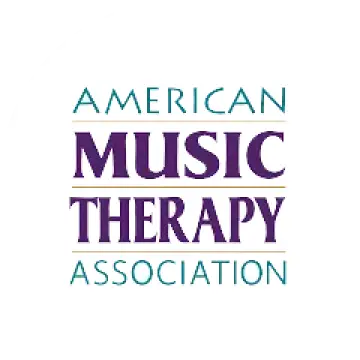Holistic Therapy
Music Therapy (MT)
Music therapy uses rhythm, melody, and guided sound to help you feel calmer, think more clearly, and express what’s hard to put into words. Some sessions are active—like drumming, singing, or writing a simple chorus—while others are restful, with quiet listening and breathing exercises. Unlike talk therapy, music therapy turns sound into a tool you can carry with you, especially during stress, cravings, or difficult moments.



What Music Therapy Really Looks Like
Music therapy is an evidence-based approach that blends creative expression with body-calming techniques. The goal is simple: ease anxiety, lift mood, and build coping skills you can actually use. Sessions match your preferences—paced breathing to a steady beat, quiet listening, or lyric reflection—so the work feels comfortable and practical from day one.
Rhythm helps slow racing thoughts and ease your breathing. With that calm, it’s easier to notice what matters and make decisions without mental overload.
You’ll practice short routines like humming, steady-beat breathing, or a two-song playlist for tough moments. These are easy to use at home, at work, or before bed—no special equipment required.
Each visit ends with a plan: a few songs, a practice routine, and a reminder cue. These small steps make the benefits stick and keep helping you between sessions.




How Music Therapy Works
Here’s what a typical session looks like, including how it fits with your medical care if you’re in detox or residential treatment.
Start with a Health Check and Your Goals
You’ll share how you’re feeling—mood, sleep, cravings, pain—and set a focus, like easing anxiety at night or reducing stress during cravings.
Set Up a Safe Space
You choose headphones or speakers, light levels, and whether you sit or recline. Instruments are sanitized, volume stays comfortable, and you can pause or switch activities anytime.
Relax the Body First
Slow music pairs with guided breathing to shift your nervous system out of “fight-or-flight.” Within minutes, many people notice looser muscles, calmer breathing, and a steadier heart rate.
Work with Thoughts and Emotions
You might reflect on lyrics, write a few lines, or tap a rhythm. The structure of music makes it easier to explore feelings without becoming overwhelmed.
Practice Real-Life Tools
You’ll rehearse quick routines—like a humming exercise or a bedtime playlist—so you can use them during cravings, stress, or sleepless nights.
Wrap Up with a Plan
Each session ends with one or two takeaways to try on your own. Notes are added to your treatment plan so your full care team stays aligned.
Why Guidance Matters
Music therapy works best when it’s delivered by professionals trained in mental health, addiction care, and trauma-informed approaches. Skilled guidance keeps sessions predictable and respectful, adapts activities to your comfort level, and coordinates with the rest of your treatment so everything pulls in the same direction.

Group Facilitator
- Creates a safe space for expression and connection through music.

Therapist
- Uses music to support healing, growth, and emotional balance.
What Music Therapy Helps With Day to Day
Music therapy adapts to a wide range of needs and backgrounds, even if you don’t consider yourself “musical.”
Substance use recovery
Structured music routines can steady mood, reduce tension, and offer quick coping during cravings. Many people use a short breathing track or grounding song when urges hit.
Sleep problems
Slow, guided listening paired with relaxed breathing helps quiet a busy mind and signals the body it’s time to rest.
Depression and low motivation
Uplifting tempos, lyric exploration, and small creative wins can spark energy and connection. These sessions often support the benefits of therapy and medication already in place.
Anxiety and stress
Gentle rhythms and paced breathing help dial down fight-or-flight. With practice, you can use these tools anywhere—from a waiting room to a work break.
Trauma and emotional regulation
Predictable rhythms and choice-based activities build safety and reduce reactivity. You stay in control of pace, volume, and content.
Chronic pain and medical anxiety
Music-assisted relaxation can ease muscle tension and shift attention, supporting pain-management plans designed with your medical team.
Care That Wraps Around You
Music therapy fits smoothly into the broader treatment experience at The Haven Detox. It complements individual counseling, group support, medication management, and family involvement. Skills from sessions often show up in peer groups, during family calls, and at home—like using a sleep playlist at night or a grounding track before a stressful appointment.
Build Relationships
Calm, Creative Environment
Alternative Therapeutic Opportunity
Locations Offering Music Therapy
Choose from The Haven Detox centers that offer Music Therapy. Spaces are quiet, private, and designed for relaxation and creative work. Admissions can share which locations provide Music Therapy now and how it can fit into your plan.

The Haven Detox - Florida
Space Available
Insurance Accepted
Music Therapy Offered

The Haven Detox - West Memphis
Space Available
Insurance Accepted
Music Therapy Offered

The Haven Detox - Arizona
Space Available
Insurance Accepted

The Haven Detox - Little Rock
Space Available
Insurance Accepted

The Haven Detox - New Jersey
Space Available
Insurance Accepted

The Haven Detox - New England
Space Available
Insurance Accepted

The Haven Detox - Puerto Rico
Space Available
Insurance Accepted
Music Therapy Success Stories
Sean F.
Amber R.
Rena M.
Insurance Coverage & Accessibility for Music Therapy
FAQs About Music Therapy
Do I need to be musical to benefit?
No. Sessions are guided step by step, using music and techniques that match your comfort level and goals.
What happens in a typical session?
Is music therapy actually effective?
Research shows music therapy can reduce symptoms of anxiety and depression and support coping during medical care. Benefits are strongest when sessions are led by trained, board-certified therapists.
Can music therapy help during detox or early recovery?
Yes. Sessions are gentle and regulating. Many people use short breathing tracks and steady rhythms to manage cravings and withdrawal discomfort.
How quickly will I notice a difference?
Some people feel calmer in the first session because music directly influences breathing and heart rate. For lasting change, a series of sessions helps you practice and personalize the skills.
What if certain songs bring up hard memories?
You stay in control. Your therapist avoids triggers, keeps choices predictable, and offers grounding techniques so sessions feel safe.
How long are sessions and how often do they happen?
Sessions usually last 45 to 60 minutes. Frequency depends on your level of care and goals—often one to three times per week during treatment.
How is this different from just listening to my own playlist?
Personal playlists are great. Music therapy takes it further by using clinical methods—like tempo, rhythm, and structured breathing—to target specific symptoms, then practicing those skills so they stick.
Will this replace my other treatments or medications?
No. Music therapy works alongside counseling, medications, and medical care. Your team coordinates everything so therapies support each other.
Can I continue music therapy after I leave?
Yes. Admissions can help you plan for continued sessions or community options near home.
Related Treatment Options
Have Questions? Let’s Talk!
Call the free 24/7 helpline to get answers and a plan for treatment that’s best for your specific medical and insurance situation — even if it’s not with us.
24/7 Support
Need someone to talk to? We’re always here—day or night.
No Commitment
Ask questions, get guidance—no pressure, no obligation.
100% Private
Your story stays with us. Confidential support, always.

